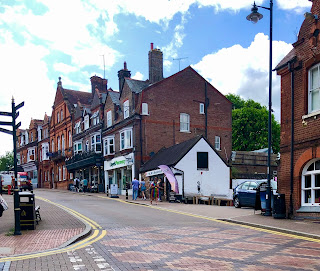In the UK, there is no lack of large country houses, originally owned by Lords and Ladies. And although these are now open to the public, as exhibits of a golden age, their interest is more than just as a museum. Many of the aristocratic families had lifestyles that provide the real interest. The Museum of National History at Tring is primarily a collection of stuffed and mounted animals. Over the years it has grown to hold more animals, skeletons, insects and eggs. However, the story of how the museum and its collection came to be, and its owner Walter Rothschild, adds color and interest. In acknowledgment of this curious life, the museum has opened another exhibit: the Rothschild room.The sheer number of animals stuffed and staged in glass cabinets is impressive. The size of larger exhibits like the bears and elephants are also worth a visit. I was pleased to find unusual creatures like deep sea fish, rare specimens like a coelacanth, and a South American Screamer. The screamer is a large bird I was attacked by in the Brazilian Pantanal, running for cover as it aimed to harm me with the sharp bone spurs on each wing.
A few of the specimens do not look lifelike to those of us who have had ample opportunity to view footage of these animals in real life. But when the first of the collection where stuffed, most people had never seen the real animal. This collection is certainly extensive with many specimens that were new to science.
But who collected all these animals from far off and dangerous lands? Walter Rothschild, son of the first Earl Rothschild, started collecting insects as a boy. By the time he was 10, he opened a 'museum' in his parents' garden shed. He also kept live specimens on the family land, Tring Park. The menagerie of exotic animals included emus, zebras, kangaroos and a large number of giant tortoises. The zebras were trained to pull a carriage that took Walter to Buckingham Palace.
Walter's family did not appreciate his interest in natural history, and to get the specimens out of the house his father built him a museum for his 21st birthday. That was the beginning of the Tring Zoological Museum.
Walter himself did not go off around the world, he had many collectors that went to over 48 countries and brought him back specimens. One collector was his brother, Charles, who collected fleas, looking for the flea that spread the bubonic plague. I'm not sure how he knew he had the right one! Another Charles, recored a disastrous exhibition to the Galapagos. The ship's captain died of yellow fever, one man was sacked for drunkenness and another ran away. All funds were spent on undertaker and doctor fees, so the remaining two men had to abandon the expedition. Both caught yellow fever and only Charles Harris survived to try again. That in itself would make a bestseller! Another sailor was sent to Hawaii, (then the Sandwich Islands) to collect birds. He documented the harvesting of thousands of eggs which gave Tring the biggest egg collection in the world.
Walter's endeavor was not without its troubles. More than once he encountered money problems and was forced to sell off parts of his collection for cash. His prized bird collection went to New York. Only after his death was it revealed that he had been blackmailed by a former mistress and her husband for 40 years.
Many might have found Walter Rothschild odd, and certainly eccentric. But his single mindedness created the largest natural history collection assembled by one person. Researchers and film makers around the world have continued to use the Tring museum in their work for the 125 years that it has been open. Walter's story certainly made it memorable for me!




No comments:
Post a Comment